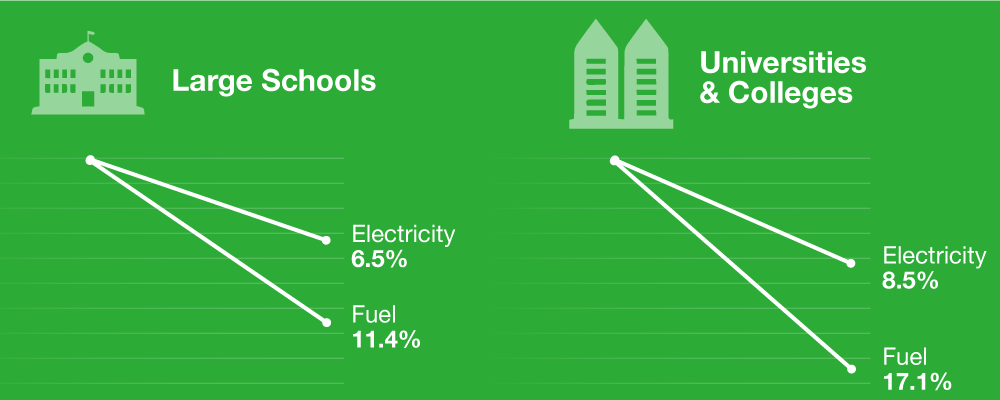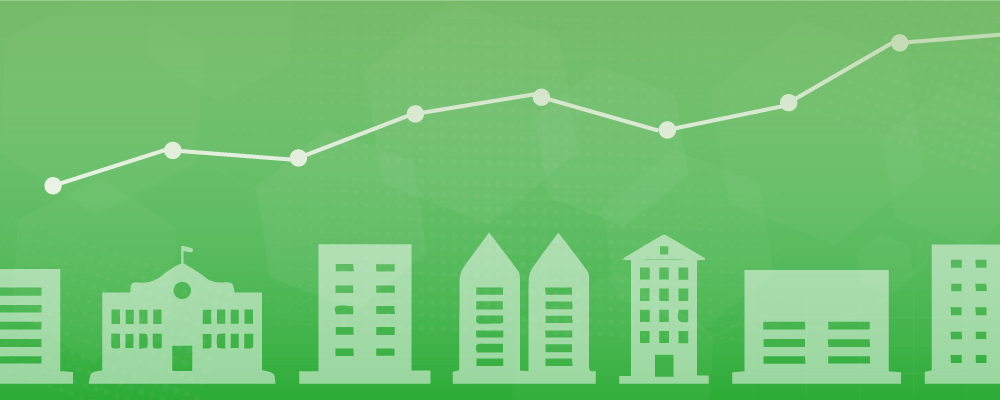Small improvements add up. Ongoing refinements of a facility from a continuous optimization program lead to tangible reductions in utility costs and energy consumption, all while ensuring occupants are comfortable.
Continuous optimization relies on routine monitoring, analysis and responses to adjust the operations of a facility. This process goes by a few other names, including recommissioning (RCx) and continuous commissioning, and it can be as simple as adjusting temperature setpoints or as complex as comprehensive adjustments to the sequence of operations.
Learn more about recommissioning basics for school facilities from Marco Bieri, Energy Efficiency Engineer with Rede Energy Solutions.
Identifying the savings from continuous optimization
BC Hydro reviewed the energy consumption and utility costs of commercial and institutional facilities before and after implementing a continuous optimization program. Out of 422 facilities examined, continuous optimization programs were able to reduce average energy costs by 7.4 per cent. The typical payback for a continuous optimization program was under 2 years.

Recommissioning educational facilities
Nearly half of the facilities reviewed were education facilities, including 110 large schools and 86 colleges and universities. As larger and more complex facilities, colleges and universities tend to have a higher implementation cost but a higher potential for energy savings. The expected simple payback period for a continuous optimization program in educational facilities is 2.2 years.

| Average Size (ft2) | Implementation Cost | Electricity Consumption Savings | Fuel Consumption Savings | Total Cost Savings | Payback | |
|---|---|---|---|---|---|---|
| Large Schools | 108,949 | $0.18 | 6.5% | 11.4% | 9.8% | 2.2 years |
| University & Colleges | 127,903 | $0.37 | 8.5% | 17.1% | 13.6% | 2.2 years |
Other types of facilities
Compared to other types of institutional and commercial facilities, educational buildings fall in the middle of the range in terms of size and potential for savings. Implementation costs tend to be higher for facilities with complex internal systems (including recreational and extended care buildings). Typical energy savings varies with size and implementation cost, but the simple payback period does not exceed three years for a continuous optimization program in any facility type.
| Average Size (ft2) | Implementation Cost | Electricity Consumption Savings | Fuel Consumption Savings | Total Cost Savings | Payback | |
|---|---|---|---|---|---|---|
| Shopping Mall | 375,333 | $0.08 | 3.2% | 1.5% | 2.4% | 1.4 years |
| Medium Office | 74,190 | $0.32 | 6.98% | 12.52% | 9.97% | 2.3 years |
| Large Hotel | 338,025 | $0.21 | 4.49% | 10.24% | 8.27% | 1.4 years |
| Large Office | 240,627 | $0.28 | 4.58% | 13.43% | 7.27% | 2.2 years |
| Recreation | 130,761 | $0.52 | 7.37% | 7.16% | 9.85% | 2.9 years |
| Hospital | 212,690 | $0.26 | 4.32% | 8.91% | 6.74% | 1.9 years |
| Restaurant | 38,151 | $0.35 | 9.39% | 5.61% | 6.93% | 1.2 years |
| Extended Care | 69,607 | $0.42 | 5.50% | 10.82% | 10.22% | 2.5 years |
| Large Retail | 113,975 | $0.13 | 6.00% | 4.50% | 8.54% | 1.8 years |
| Museum | 311,803 | $0.32 | 8.91% | n/a | 9.67% | 2.2 years |
| Food Retail | 133,211 | $0.01 | 5.51% | 2.45% | 7.31% | 0.1 years |
Where do the savings come from?
A continuous optimization program is a cycle of monitoring, analysis and refining the operations of a facility. The refinements are often just small enhancements or improvements in efficiency, but altogether the changes contribute to quantifiable savings.
In addition to calculating the cost savings from recommissioning, BC Hydro also reviewed the actions that are typical in continuous optimization programs. The ten most common refinements are:
- Reduce equipment runtime
- Optimize economizer operation
- Eliminate opposing operations (such as simultaneous heating and cooling)
- Optimize supply air temperature
- Optimize temperature setpoints for zones and setbacks
- Eliminate unnecessary lighting hours
- Optimize rates of ventilation
- Volume control for pumps and fans
- Optimize chilled water temperature reset
- Eliminate leaky valves
Although these refinements are typical in commercial and institutional facilities, every building has different opportunities for improvements. But the cycle for continuous optimization remains the same: monitor, analyze and act accordingly.
There are opportunities for saving energy and utility costs in every facility. If you are just getting started with a continuous optimization program or looking for innovative approaches to further improve the efficiency of your facilities, contact Rede to learn more about the opportunities from recommissioning.
